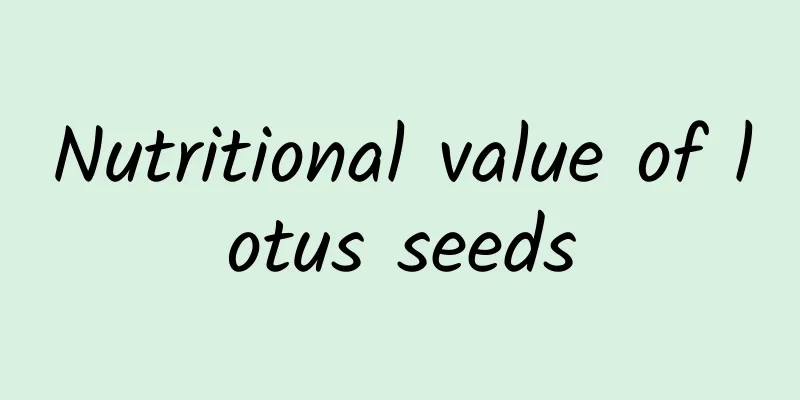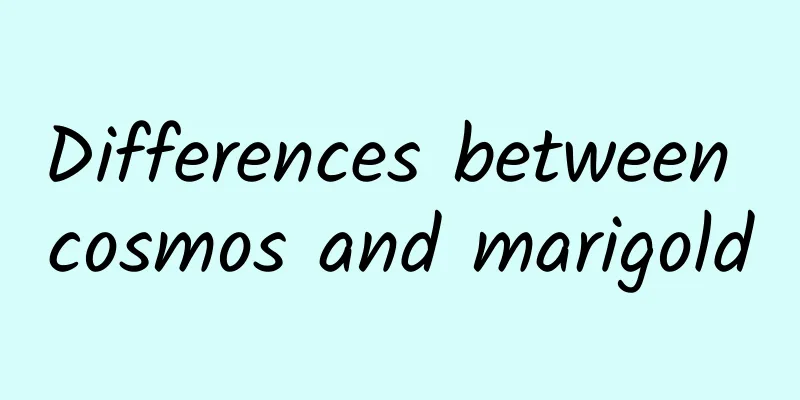What are the effects and functions of pomegranate? What are the benefits of eating pomegranate?

|
The pomegranate is shaped like a tumor, with seeds inside the skin. It is harvested and eaten when the fruit is ripe in autumn. It has two flavors, sour and sweet. The bright and eye-catching pomegranate is red like agate and white like crystal, which is very attractive. The pomegranate tastes sweet and slightly sour when eaten fresh, and it is also refreshing and delicious when processed into beverages. Pomegranates are not only nutritious, but also beautiful in shape and color. Pan Yue, a Jin Dynasty poet, wrote in "An Pomegranate Fu" that "pomegranates are the most unique trees in the world and the most famous fruits in the nine continents," "colorful and open, shining and shining, delicious and fragrant." The color, fragrance, taste and shape of the pomegranate are described in a charming way that makes people salivate. Pomegranate has a long history of cultivation in my country. Currently, there are more than 70 varieties, which are divided into two categories: ornamental and edible. Pomegranate is particularly rich in nutrition, containing a variety of nutrients needed by the human body. The fruit contains vitamin C and B vitamins, organic acids, sugars, proteins, fats, and minerals such as calcium, phosphorus, and potassium. According to analysis, pomegranate fruit contains 17% carbohydrates, 79% water, and 13-17% sugar. The content of vitamin C is 1-2 times higher than that of apples, while the content of fat and protein is relatively low. The fruit is mainly eaten fresh, and can also be made into high-quality beverages. Analysis of the nutritional value of pomegranatePomegranates are particularly rich in nutrients, containing a variety of nutrients needed by the human body. The fruit contains vitamin C and B vitamins, organic acids, sugars, proteins, fats, and minerals such as calcium, phosphorus, and potassium. According to analysis, pomegranates contain 17% carbohydrates, 79% water, and 13-17% sugar. The content of vitamin C is 1-2 times higher than that of apples, while the content of fat and protein is relatively low. The fruit is mainly eaten fresh. Pomegranate juice contains a variety of amino acids and trace elements, which can help digestion, resist gastric ulcers, soften blood vessels, lower blood lipids and blood sugar, and lower cholesterol. It can prevent coronary heart disease and high blood pressure, and can achieve the effects of invigorating the stomach, refreshing the mind, enhancing appetite, and prolonging life. It has a miraculous effect on sobering up for those who drink too much. The effects of pomegranatePomegranate is a treasure from head to toe. Its peel, roots and flowers can all be used as medicine. Its peel contains malic acid, tannins, alkaloids and other ingredients. According to relevant experiments, pomegranate peel has obvious antibacterial and astringent functions, which can make the intestinal mucosa astringent and reduce the secretion of intestinal mucus wax, so it can effectively treat diarrhea, dysentery and other diseases, and has a good inhibitory effect on Shigella dysenteriae and Escherichia coli. In addition, the peel of pomegranate contains alkaline substances, which have the effect of repelling insects; pomegranate flowers have the function of stopping bleeding, and soaking pomegranate flowers in water to wash eyes has the effect of improving eyesight. 1. Broad-spectrum antibacterial: Pomegranate peel contains a variety of alkaloids. Antibacterial tests have confirmed that the alcohol extract of pomegranate and the water decoction of the peel have a broad-spectrum antibacterial effect. It has a significant inhibitory effect on Staphylococcus aureus, hemolytic Streptococcus, Vibrio cholerae, Shigella dysenteriae, etc., among which the strongest effect is on Shigella dysenteriae. The water extract of pomegranate peel also has different degrees of inhibitory effect on various skin fungi in the test tube. The decoction of pomegranate peel can also inhibit influenza virus; 2. Astringent and bowel-stringent: Pomegranate tastes sour and contains alkaloids, ursolic acid, etc. It has obvious astringent effect and can astringe the intestines and stop bleeding. In addition, it has good antibacterial effect, so it is a good product for treating dysentery, diarrhea, bloody stools, spermatorrhea, rectal prolapse and other diseases. 3. Anti-insect and insecticide: Pomegranate peel and pomegranate root bark contain pomegranate peel alkaloids, which have an anesthetic effect on human parasites and are important drugs for anti-insect and insecticide, especially for tapeworms. They can be used to treat abdominal pain caused by worm accumulation, scabies, etc. 4. Stop bleeding and improve eyesight: Pomegranate flowers are sour and flat in nature. If they are dried and ground into powder, they have a good hemostatic effect and can also stop leucorrhea. Soaking pomegranate flowers in water to wash eyes can also improve eyesight. The therapeutic health effects of pomegranate Modern research shows that the alkaloids contained in pomegranate peel have strong antibacterial effects, can cure dysentery, and also have an inhibitory effect on skin fungi. Pomegranates can be eaten raw to quench thirst, and can also be processed into syrups, beverages, etc., and their peels can be made into honey paste. |
<<: Can pregnant women eat pomegranates? The nutritional value and efficacy of pomegranates
>>: How to eat pomegranate? The efficacy and function of pomegranate
Recommend
Nutritional value and cooking methods of cowpea
Cowpea is also called green beans and beans. Do w...
red dates
Red dates, also known as jujubes, are characteriz...
Fresh lotus root porridge
How much do you know about fresh lotus root porri...
How to eat wild Hericium erinaceus
Wild Hericium erinaceus is a kind of mountain foo...
What are the varieties of loofah
We have all heard of loofah, but what are the var...
Assorted Porridge
How much do you know about the recipe of mixed po...
How is L'Equipe? L'Equipe reviews and website information
What is L'Equipe? L'Equipe is an authorita...
The effects and functions of eating green onions. Can green onions enhance sexual performance?
Everyone must be very familiar with green onions....
How is the Korea World Daily? Reviews and website information of the Korea World Daily
What is the Korea World Daily website? Korea's...
How is the company? Company reviews and website information
What is Dollar General Corporation? Dollar General...
How is the National Museum of Nature and Science in Japan? Reviews and website information of the National Museum of Nature and Science in Japan
What is the website of the National Museum of Natu...
How is the Korean International Broadcasting Station? Korean International Broadcasting Station Review and Website Information
What is the website of KBS World Radio? KBS World ...
How is Ronnie O'Sullivan? Ronnie O'Sullivan review and website information
What is Ronnie O'Sullivan's website? Ronni...
The difference between japonica rice and rice, and the taboos of eating japonica rice and rice
Everyone is familiar with japonica rice and rice,...
Can green onions cure diseases? The medicinal effects of green onions
Scallions are an indispensable ingredient in peop...









